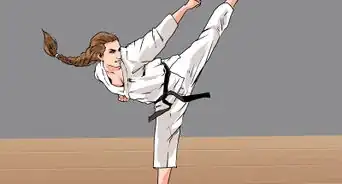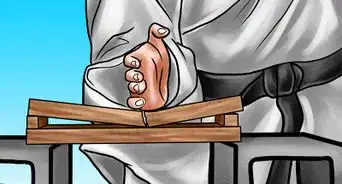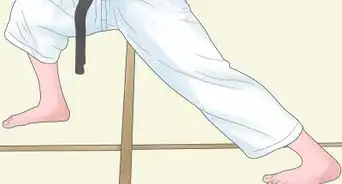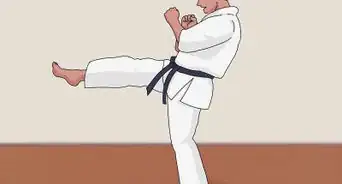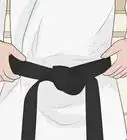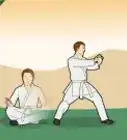This article was co-authored by Yvonne Mo. Yvonne Mo is a Fitness and Health Coach and Kung Fu Instructor. With more than 21 years of fitness industry and martial arts experience, she specializes in combining and teaching eastern and western fitness and health modalities, which include Tai Chi, sports acupuncture, Chinese medicine, and fire cupping. Yvonne received her Personal Trainer Certifications through both the National Strength and Conditioning Association and the American College of Sports Medicine.
This article has been viewed 396,777 times.
Modern students of karate display their rank by a system of different colored belts, or obi. As students advance in their training, they swap out their previous belt for one of a new color to signify their progress. Each karate style has its own ranking system and within those are variations between organizations and even individual dojo. However, there are some general rules one can learn to get a better idea of what a particular karate belt may mean.
Steps
-
1Start with a white belt. Martial artists did not adopt the colored belt system until the 20th century, and it's common for each school to use its own variation.[1] Almost every school starts the beginners with a white belt.
- A karate student begins at 10th kyu (student rank).
-
2Move up to yellow belt. If students train regularly, they get to take a test every few months to progress to the next kyu. At certain milestone ranks, the student gets a new belt. Yellow is usually the second belt a student wears, at 8th kyu.[2]Advertisement
-
3Advance through darker and darker belts. This is the part that varies the most between schools. In general, students spend their first year advancing to darker and darker belts.
- A typical progression is orange (around 7th kyu), green, blue, and purple (around 4th kyu). Many schools use a slightly different order, or one fewer color.[3]
-
4Complete kyu advancement with brown belt. The highest ranking in the kyu system is almost always the brown belt. The student typically earns this around 3rd kyu, and continues to wear it as they advance to 1st kyu.
- The student has typically been training for over a year by the time they reach the brown belt. Many students continue to wear the brown belt for another two years after that, although they do get to progress from 3rd kyu brown belt to 1st kyu brown belt.[4]
-
5Achieve black belt. The famous black belt is a student's great achievement. Contrary to popular understanding, though, this doesn't mean the student is a master. Completing a bachelor's degree is a good analogy: a new black belt has a broad understanding and competence, and may be qualified to teach others.
- Karate artists can still advance from this point, but the belt color remains black. They now use the dan ranking system, starting from the 1st stage (Sho Dan) and moving upward. (Note this is the opposite of the highest to lowest kyu system.)
-
6Identify stripes on belts. Some schools use striped belts in addition to solid colors. These stripes typically show that a student is further along than the solid belt, but not yet to the next color. These stripes are usually either white or the next highest color in the ranking system.
- For example, if a student belongs to a school where the color order goes from yellow to orange, they may have a solid yellow belt. A few months later they may attain a yellow belt with orange stripes, and eventually move on to solid orange.
- Some dojo signify dan levels (black belt ranks) with white or red stripes on the black belt. White or red tips or ends are also sometimes used.
-
7Ask the martial artists for details. You may need to know the practitioner's home dojo to understand whether blue is higher than green, or what a more complicated system of stripes means. Also keep in mind that each school has its own requirements and standards for moving along in rank. A student considered a 7th kyu at one dojo may have actually studied longer than a 5th kyu at a different dojo. Talk to the instructors, also called sensei, who teach at the dojo to find out more. Many schools and organizations explain their ranks and belt colors on their websites.
Community Q&A
-
QuestionWhat percentage of students earn a black belt in karate?
 Community AnswerNot very many as the schedule can be demanding and long. I would say about 5% of students go on to fully complete their black belt certification based on the numbers I've seen.
Community AnswerNot very many as the schedule can be demanding and long. I would say about 5% of students go on to fully complete their black belt certification based on the numbers I've seen. -
QuestionWhere does a Brown Belt fall on the spectrum?
 Community AnswerIn my karate school, it's the belt before black belt, although they still need to get stripes before they become a black belt. In other systems, they don't even use the brown belt. Instead, they use the red belt.
Community AnswerIn my karate school, it's the belt before black belt, although they still need to get stripes before they become a black belt. In other systems, they don't even use the brown belt. Instead, they use the red belt. -
QuestionCan you change the karate belt color back what you had before?
 Community AnswerNo. Getting a higher belt after you test means you are proficient or advanced in your level, and the old level can no longer contain you. You cannot move backwards.
Community AnswerNo. Getting a higher belt after you test means you are proficient or advanced in your level, and the old level can no longer contain you. You cannot move backwards.

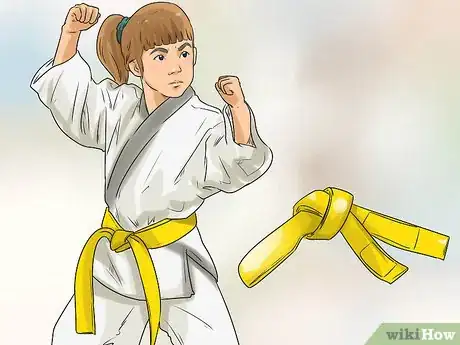
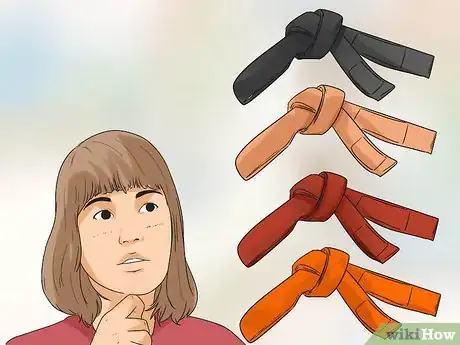
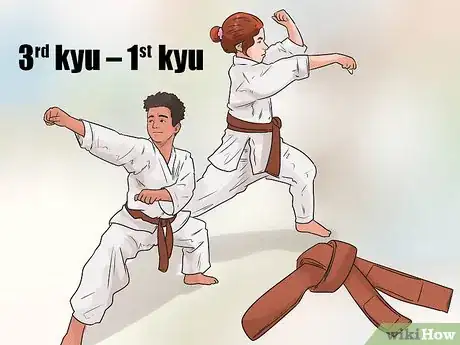
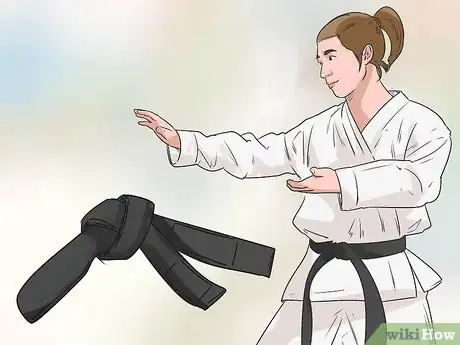
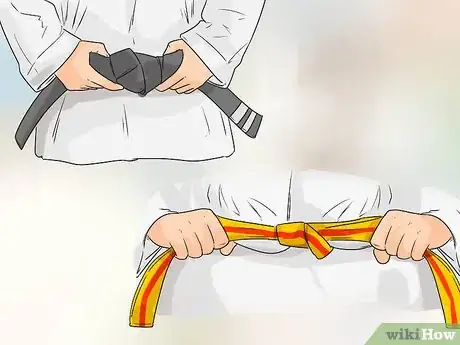

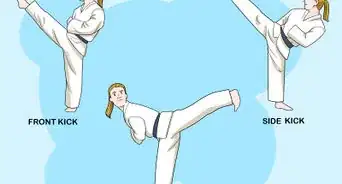

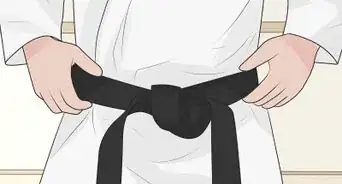
-Step-7-Version-2.webp)
